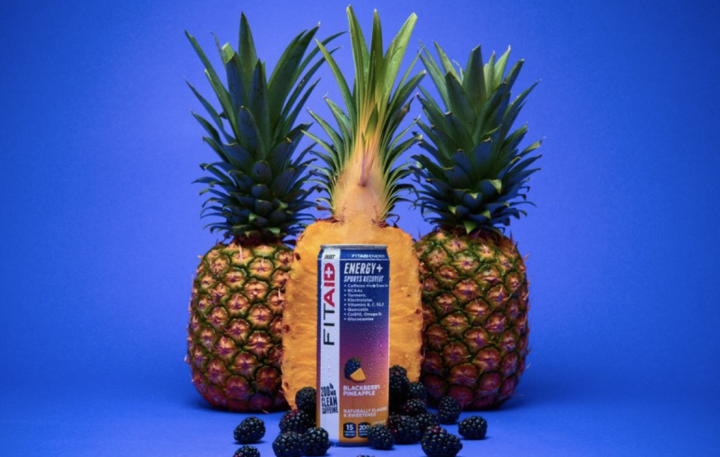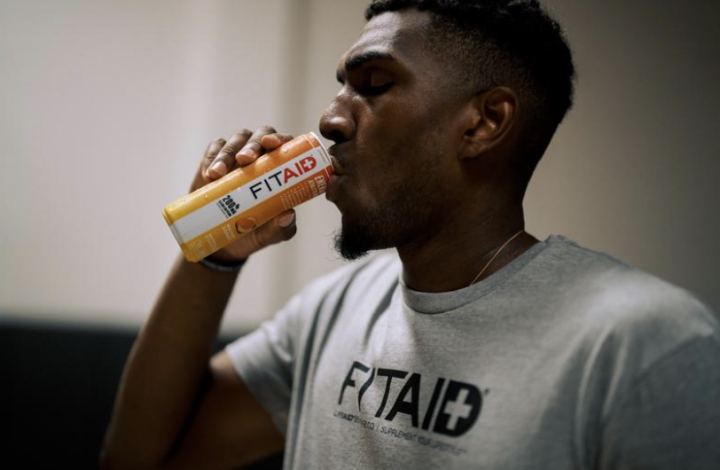Why Naturally Sweetened Drinks are Important
With the growing trend towards healthy and clean living, more people are paying attention to the ingredients in their food and drinks. One of the most important things to consider is how a drink is sweetened. While many drinks are sweetened with artificial sweeteners, it's important to choose drinks that are naturally sweetened, like FITAID, to get the most health benefits.
What are Natural Sweeteners?
Natural sweeteners are sweeteners that come from natural sources, such as plants and fruits. They are not processed or chemically altered, and are therefore considered to be healthier alternatives to artificial sweeteners. Some common examples of natural sweeteners include honey, maple syrup, agave nectar, and stevia.
What are Artificial Sweeteners?
Artificial sweeteners, on the other hand, are man-made chemicals designed to mimic the taste of sugar. They are commonly used in low-calorie and sugar-free products to provide a sweet taste without the added calories. Some of the most well-known artificial sweeteners include sucralose, aspartame, and Ace-K.
Why Consider How Your Energy Drink is Sweetened
One of the main reasons to consider how your energy drink is sweetened is because of the potential health risks associated with artificial sweeteners. While these sweeteners are marketed as healthier alternatives to sugar, some studies have shown that they may be linked to a range of health problems, such as weight gain, headaches, and increased risk of certain types of cancer.
In addition to the potential health risks, artificial sweeteners can also affect the taste and quality of your energy drink. Many people find that artificial sweeteners have a metallic or artificial taste, which can make the drink less enjoyable to consume.
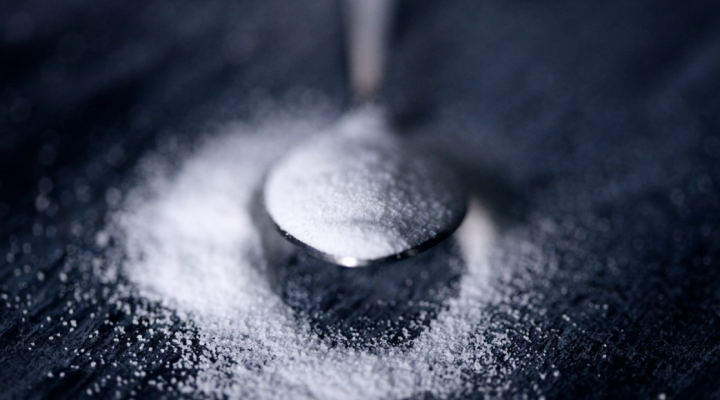
Why FITAID is the Best Drink for Post-Workout
FITAID is a great choice for anyone looking for a naturally sweetened energy drink. Unlike other energy drinks that are sweetened with artificial sweeteners like sucralose, aspartame, or Ace-K, FITAID is naturally sweetened with stevia, a plant-based sweetener that provides a clean, natural taste.
FITAID also contains clean caffeine from green tea extract. Green tea extract is a natural source of caffeine that provides a sustained energy boost without jitters or crashes.
Why Being Naturally Sweetened is Important in an Energy Drink
Being naturally sweetened is important in an energy drink because it provides a cleaner, healthier alternative to artificial sweeteners. Natural sweeteners like stevia are not chemically altered, which means that they are less likely to be associated with health problems.
In addition, natural sweeteners provide a natural, clean taste that is more enjoyable to drink. Unlike artificial sweeteners, which are often criticized for having a metallic or artificial taste, natural sweeteners provide a natural sweetness that is easy on the palate.
The Importance of Natural Caffeine
The caffeine found in energy drinks can also have an impact on your health and wellbeing. Natural caffeine from sources like green tea extract provides a sustained energy boost without the negative side effects. Green tea extract is also rich in antioxidants, which can help to protect your cells from damage and promote overall health.
Conclusion
In conclusion, choosing a naturally sweetened energy drink like FITAID is important for your health and well-being. Natural sweeteners like stevia provide a clean, natural taste without the health risks associated with artificial sweeteners.
When choosing an energy drink, it's important to consider the ingredients and how they are sourced. By choosing a drink that is naturally sweetened and contains clean caffeine, you can ensure that you are getting the best possible health benefits.
FITAID is a great choice for anyone looking for a naturally sweetened energy drink. With its clean, natural taste and sustained energy boost, it is the perfect drink for post-workout or for anyone who needs a boost of energy during the day.
In scientific studies, natural sweeteners like stevia have been shown to be safe for consumption and not associated with any health risks. Similarly, clean caffeine from green tea extract has been shown to provide a sustained energy boost without negative side effects.
In summary, choosing a naturally sweetened energy drink is important for your health and well-being. By selecting a drink like FITAID, you can enjoy the benefits of a clean, natural taste and sustained energy boost without any of the potential health risks associated with artificial sweeteners.
Here are a few references for the information included in the blog post:
How does stevia work as a sweetener? -https://www.medicalnewstoday.com/articles/323651
Stevia as a Natural Sweetener: A Comprehensive Review - https://www.ncbi.nlm.nih.gov/pmc/articles/PMC3940207/
Artificial Sweeteners: A Systematic Review of Metabolic Effects in Youth - https://www.ncbi.nlm.nih.gov/pmc/articles/PMC5569602/
The effects of caffeine on human health - https://www.ncbi.nlm.nih.gov/pmc/articles/PMC5869654/
Comparison of the antioxidant properties of green tea with those of other beverages and food stuffs - https://www.ncbi.nlm.nih.gov/pubmed/10920688
A comparison of the acute effects of green and black tea on cardiovascular, metabolic and mental health parameters in healthy adults - https://www.ncbi.nlm.nih.gov/pmc/articles/PMC6339445/
These ^^^ references support the benefits of using natural sweeteners and the potential risks associated with artificial sweeteners, as well as the benefits of clean caffeine from green tea extract.
Why Naturally Sweetened Drinks are Important With the growing trend towards healthy and clean living, more people are paying attention to the ingredients in their food and drinks. One of the most important things to consider is how a drink is sweetened. While many drinks are sweetened with artificial sweeteners, it’s important to choose drinks […]
Stay Salty. Epsom salts for Sports Recovery
The truth about Epsom Salts for Post-workout Recovery.
What are Epsom Salts?
Epsom salt, also known as magnesium sulfate, is a naturally-occurring mineral that has been used for centuries for its various health benefits. It is named after the town of Epsom in England, where it was first discovered in natural springs. But what exactly is it, and how does it work? And, more importantly, is it really good for you post-workout?
First, let's talk about what epsom salt is. It is a combination of two minerals, magnesium and sulfate, which are both essential for human health. Magnesium plays a crucial role in over 300 enzymatic reactions in the body, including regulating muscle and nerve function, blood sugar levels, and blood pressure. Sulfates, on the other hand, are responsible for flushing toxins out of the body and improving the absorption of nutrients. Together, these minerals make epsom salt a powerful tool for promoting overall health and wellness.
How do Epsom Salts work?
Epsom salt works by being absorbed through the skin when it is dissolved in water. This process allows the magnesium and sulfates to enter the body and begin their beneficial work. Magnesium helps to relax muscles and nerves, while sulfates work to flush out toxins and improve nutrient absorption. This makes epsom salt an effective post-workout remedy for sore muscles and aching joints.
Are Epsom Salts the same as Bath Salts?
It is important to note that epsom salt is not the same as bath salts. Bath salts are often used for recreational purposes and can be harmful if used improperly. Epsom salt, on the other hand, is a naturally-occurring mineral that is safe for use in bathwater.
All that salt making you thirsty?
In addition to epsom salt, another great post-workout choice is FitAid Energy. This energy drink is specially formulated to provide the perfect balance of nutrients to help your body recover after a workout. It contains no sodium, since your diet more than likely contains enough of your daily sodium needs, and is naturally sweetened with no sucralose or aspartame or Ace-K. All of which are artificial sweeteners that may be harmful to your health. FitAid Energy also uses clean caffeine from green tea extract, which is a natural source of caffeine.
Why does it matter that FITAID Energy is naturally sweetened?
Being naturally sweetened is important in an energy drink because artificial sweeteners can have negative effects on your health. They have been linked to a variety of health problems, including cancer, obesity, and diabetes. Natural sweeteners, on the other hand, are derived from natural sources and are less likely to cause harm.
Why does it matter that FITAID Energy contains natural caffeine?
The importance of natural caffeine also lies in its effects on the body. Natural caffeine is derived from natural sources like green tea and is unlikely to cause side effects such as jitters, anxiety, and insomnia. It also has been shown to provide additional benefits such as antioxidant properties.
SUMMARY:
In conclusion, epsom salt is a safe and effective way to promote post-workout recovery. It is a naturally-occurring mineral that is absorbed through the skin and provides a variety of health benefits. FitAid Energy is also a great post-workout remedy, providing the perfect balance of nutrients to help your body recover. It is naturally sweetened and uses clean caffeine from green tea extract, making it a healthy and safe alternative to other energy drinks.
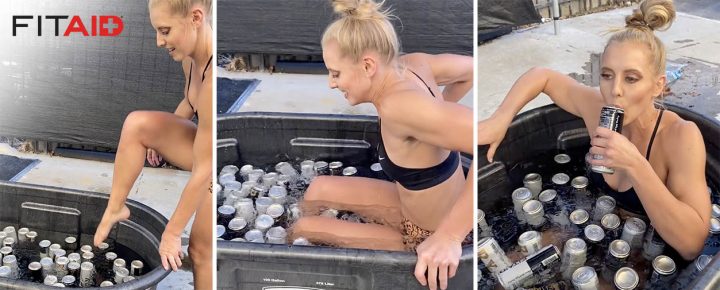
References:
"Magnesium: Essential for Life, but Underconsumed" by the Office of Dietary Supplements
"The truth about Epsom salt" by Dr. Andrew Weil
Epsom salt is a safe and effective way to promote post-workout recovery. It is a naturally-occurring mineral that is absorbed through the skin and provides a variety of health benefits. FitAid Energy is also a great post-workout remedy, providing the perfect balance of nutrients to help your body recover. It is naturally sweetened and uses clean caffeine from green tea extract, making it a healthy and safe alternative to other energy drinks.
How are gratitude and fitness correlated?
Attitude of Gratitude
Yes, being grateful will improve your workout. Here is why:
Gratitude, joy, and happiness are closely related concepts that have been studied by researchers in the field of positive psychology. While all three are associated with positive emotions, there are subtle differences in their meanings and the ways in which they impact physical health.

What is gratitude?
Gratitude is the feeling of appreciation or thankfulness for something or someone. It is the recognition of the good things in one's life and the realization that these things come from external sources. Studies have shown that gratitude is associated with improved psychological well-being, including increased life satisfaction and decreased depression and anxiety. Additionally, research has found that gratitude is associated with improved physical health. For example, a study published in the journal Personality and Individual Differences found that gratitude is positively associated with heart rate variability, a measure of cardiovascular health. Other research has found that gratitude is associated with better sleep and improved immune function.
Is joy is the spice of life?
Joy is a feeling of delight or pleasure, often associated with positive experiences or accomplishments. Joy is typically considered to be a more intense and fleeting emotion than gratitude. Studies have found that joy is associated with increased positive affect and improved psychological well-being. Additionally, research has suggested that joy is associated with improved physical health, including decreased inflammation and improved cardiovascular health.
Does happiness affect your fitness?
Happiness is a broad term that is often used to describe a general sense of well-being or contentment. Unlike gratitude and joy, happiness is not necessarily tied to a specific event or experience. Studies have found that happiness is associated with improved psychological well-being, including increased life satisfaction and decreased depression and anxiety. Additionally, research has suggested that happiness is associated with improved physical health, including decreased inflammation and improved cardiovascular health.
How is physical health related to one’s attitude?
Physical health and fitness are closely related to one's mental attitude. Positive mental attitude (PMA) can help encourage good workouts and athletic performance. Studies have shown that athletes who have a positive mental attitude tend to perform better than those who have a negative one. For example, a study published in the Journal of Sport Psychology found that athletes who had a positive mental attitude were more likely to report higher levels of self-confidence, which in turn was associated with better athletic performance.
How can gratitude help my athletic performance?
Athletes can benefit from practicing gratitude, joy, and happiness, as these positive emotions can help improve their mental attitude and thus their athletic performance. For example, a study published in the Journal of Applied Sport Psychology found that athletes who regularly engaged in gratitude exercises reported higher levels of satisfaction with their athletic performance and their lives overall. Additionally, research has suggested that athletes who are able to maintain a positive mental attitude are better able to cope with the stress and demands of their sport.
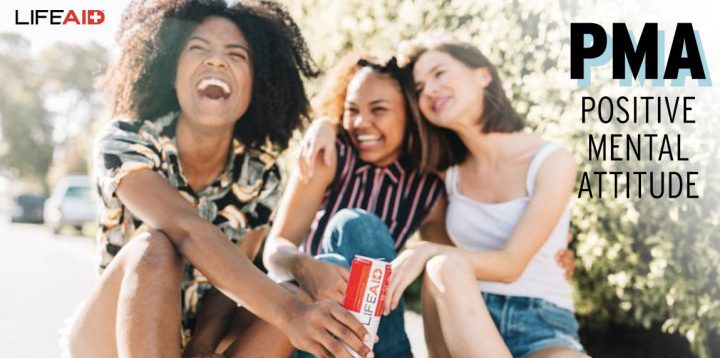
References:
-
- Emmons, R. A., & McCullough, M. E. (2003). Counting blessings versus burdens: an experimental investigation of gratitude and subjective well-being in daily life. Journal of personality and social psychology, 84(2), 377.
- Wood, A. M., Joseph, S., & Linley, P. A. (2008). The role of gratitude in the development of social support, stress, and depression: two longitudinal studies. Journal of research in personality, 42(4), 854-871.
- Algoe, S. B., Haidt, J., & Gable, S. L. (2008). Beyond reciprocity: gratitude and relationships in everyday life. Emotion, 8(3), 425.
- Emmons, R. A. (2007). Thanks! How the new science of gratitude can make you happier. Houghton Mifflin Harcourt.
- Wood, A. M., Froh, J. J., & Geraghty, A. W. (2010). Gratitude and well-being: a review and theoretical integration. Clinical psychology review, 30(7), 890-905.
- Froh, J. J., Yurkewicz, C., & Kashdan, T. B. (2009). Gratitude and well-being: a review and theoretical integration. Clinical psychology review, 29(3), 72-90.
- Froh, J. J., Sefick, D. J., & Emmons, R. A. (2008). Counting blessings in early adolescents: an experimental study of gratitude and subjective well-being. Journal of School Psychology, 46(2), 213-233.
- Wood, A. M., Maltby, J., Gillett, R., Linley, P. A., & Joseph, S. (2008). The authentic personality: a theoretical and empirical conceptualization and the development of the Authenticity Scale. Journal of counseling psychology, 55(3), 385.
- Seligman, M. E., Steen, T. A., Park, N., & Peterson, C. (2005). Positive psychology progress: empirical validation of interventions. American psychologist, 60(5), 410.
- Gable, S. L., Reis, H. T., Impett, E. A., & Asher, E. R. (2004). What do you do when things go right? The intrapersonal and interpersonal benefits of sharing positive events. Journal of personality and social psychology, 87(2), 228.
SUMMARY:
In conclusion, gratitude, joy, and happiness are closely related concepts that have been linked to improved psychological well-being and physical health. These positive emotions can be cultivated through simple practices, such as keeping a gratitude journal or engaging in activities that bring joy and happiness. Additionally, athletes can benefit from practicing gratitude, joy, and happiness, as these positive emotions can help improve their mental attitude and thus their athletic performance. Overall, it is important to be mindful of the many ways in which positive emotions can improve our overall well-being, both physically and mentally.
How is gratitude and fitness correlated?
The Importance of Consuming Enough Water for Post-Workout Recovery
Proper hydration is essential for optimal physical performance and post-workout recovery. When we exercise, our bodies lose fluids through sweat and respiration, which must be replenished in order to maintain proper function. Inadequate hydration can lead to decreased endurance, reduced strength, and increased risk of injury.
Hydration 101:
The science behind hydration is straightforward. Water is essential for maintaining proper bodily functions, such as regulating body temperature, transporting nutrients, and eliminating waste products. During exercise, the body's demand for water increases as we sweat to cool ourselves down and breathe harder to oxygenate our muscles. If we do not replenish the fluids we lose, we risk becoming dehydrated.
Dehydration can have serious consequences, particularly during exercise. As little as a 2% loss of body weight due to dehydration can negatively impact physical performance. In a study published in the Journal of Athletic Training, it was found that dehydration of just 1-2% can lead to a significant decrease in endurance and strength.
How much water do you REALLY need?
To ensure proper hydration, it is recommended to consume at least 17-20 ounces of water 2-3 hours before exercise, and another 7-10 ounces of water 20-30 minutes before exercise. During exercise, it is recommended to drink 7-10 ounces of water every 10-20 minutes. After exercise, it is important to replenish fluids by drinking at least 24 ounces of water for every pound of body weight lost during exercise.
In addition to water, electrolyte-rich beverages such as FITAID drinks can also be beneficial for replenishing fluids and electrolytes lost through sweat during exercise. It is important to note that typical sports drinks are typically high in sugar and calories. This is why FITAID and ALL LIFEAID products are always naturally sweetened, and always contain electrolytes without sodium.
Chug chug chug... Can you drink TOO much water?
While it is important to consume adequate water, it is also possible to over-hydrate. Over-hydration, also known as hyponatremia, occurs when the body's sodium levels become diluted due to excessive water intake. Symptoms of hyponatremia include headache, nausea, confusion, and in severe cases, seizures and coma. To avoid over-hydration, it is recommended to consume water at a steady pace during exercise, rather than consuming large amounts at once. It is also important to pay attention to thirst cues and not to force fluids.
Does alkaline water aid post-workout recovery?
Another question that is often raised is whether the alkalinity of water matters for hydration and post-workout recovery. The pH of water refers to its acidity or alkalinity on a scale of 0-14, with 7 being neutral. While some proponents of alkaline water argue that it can provide health benefits, such as reducing acidity in the body and improving hydration, there is currently limited scientific evidence to support these claims. According to the International Society of Sports Nutrition, the pH of water does not affect hydration or performance.
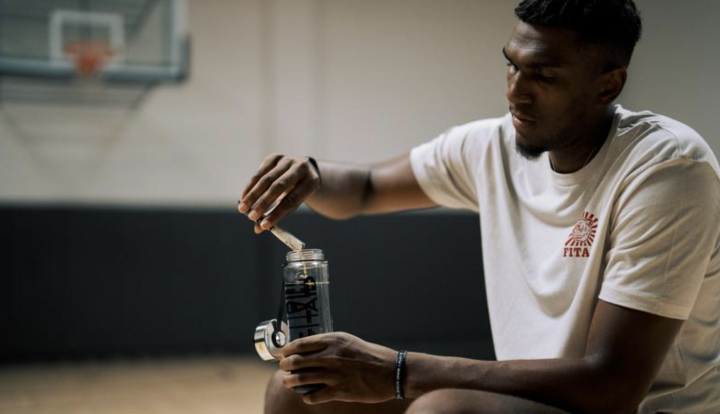 H2O Summary:
H2O Summary:
Proper hydration is essential for optimal physical performance and post-workout recovery. Consuming adequate water before, during, and after exercise can help to prevent dehydration and its negative effects on physical performance. It is recommended to consume 17-20 ounces of water 2-3 hours before exercise, another 7-10 ounces of water 20-30 minutes before exercise, 7-10 ounces of water every 10-20 minutes during exercise, and 24 ounces of water for every pound of body weight lost during exercise after exercise. While it is also possible to over-hydrate, paying attention to thirst cues and not forcing fluids can help to avoid this issue. The alkalinity of water does not affect hydration or performance, as per International Society of Sports Nutrition.
References:
ArmstrongLE. "Fluid, electrolyte, and temperature regulation during exercise." Journal of athletic training. 2002 Jul-Sep;37(3):332-43.
-
- Shirreffs, Susan M., et al. "Post-exercise rehydration in man: effects of volume consumed and drink sodium content." Journal of Physiology 575.3 (2006): 611-624.
Rogers, IR., et al. "Hyponatremia in endurance exercise: caution for the marathon." British Journal of Sports Medicine. 2002;36:146-151.
International Society of Sports Nutrition. Position Stand: Water and electrolyte needs for exercise. Journal of the International Society of Sports Nutrition. 2007;4:6.
The Importance of Consuming Enough Water for Post-Workout Recovery Proper hydration is essential for optimal physical performance and post-workout recovery. When we exercise, our bodies lose fluids through sweat and respiration, which must be replenished in order to maintain proper function. Inadequate hydration can lead to decreased endurance, reduced strength, and increased risk of injury. […]
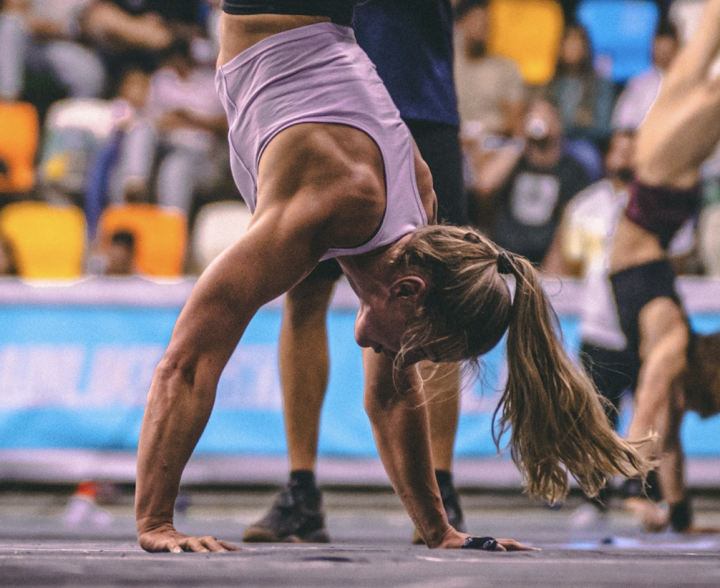 Is walking good for post-workout recovery?
Is walking good for post-workout recovery?
Walking is a great way to aid in muscle recovery after intense exercise because it helps to promote blood flow and oxygenation to the muscles, which can help to reduce muscle soreness and stiffness. When we exercise, our muscles experience small tears, which cause inflammation and soreness. The increased blood flow from walking helps to deliver oxygen and nutrients to the muscles, which aids in the repair process and can help to reduce inflammation and soreness.
Walking can also help to flush out lactic acid build-up in the muscles, which can contribute to muscle soreness and fatigue. Lactic acid is a byproduct of exercise that can accumulate in the muscles, causing discomfort and fatigue. Walking can help to move this lactic acid out of the muscles, reducing soreness and helping to speed up the recovery process.
Additionally, walking can improve flexibility and range of motion, which can be beneficial for muscle recovery after intense exercise. As we walk, our muscles and joints move through a full range of motion, which can help to loosen tight muscles and improve flexibility. This can also help to prevent injury by improving muscle balance and stability.
Incorporating a light walk as a cool-down after intense exercise can be beneficial for muscle recovery and overall wellness. It is recommended to start slowly and gradually increase the duration and intensity of the walk.
Why is going for a walk so good for you post-workout?
There are many health benefits associated with regular walking, including improved cardiovascular health, weight management, and reduced risk of chronic diseases such as diabetes and heart disease. Studies have also shown that regular walking is associated with longer lifespans, with one study finding that people who walked at least 30 minutes per day had a 20% lower risk of death compared to those who were sedentary (Lee et al., 2019).
Walking can also be beneficial for mental health, as it has been shown to reduce stress, improve mood, and boost cognitive function. Studies have also found that walking can help to improve sleep quality, reduce symptoms of anxiety and depression, and even help to prevent cognitive decline as we age.
It is important to note that while walking can aid in muscle recovery, it should not be considered a replacement for proper rest and recovery techniques such as adequate sleep, hydration and proper nutrition.
Overall, walking is a simple and effective way to improve both physical and mental well-being. It is easy to incorporate into daily routine and can be done almost anywhere, making it an accessible form of exercise for people of all ages and fitness levels.
Does running give you the same post-workout recovery as walking?
The effectiveness of walking versus running for muscle recovery after intense exercise can depend on the individual and their specific needs. Both walking and running can be beneficial for muscle recovery, but they may have slightly different effects.
One study found that walking at a moderate pace for 30 minutes after intense exercise had similar benefits as running in terms of reducing muscle soreness and inflammation (Cheung et al., 2003). The researchers suggested that the lower impact of walking may be beneficial for reducing muscle soreness and the risk of injury.
Another study compared the effects of walking, cycling and running on muscle recovery after intense exercise (Schwellnus et al., 2009). The study found that walking had similar benefits as cycling and running in terms of reducing muscle soreness and improving muscle function. The researchers suggested that walking may be a viable alternative to cycling or running for muscle recovery.
It is important to note that the intensity of the walking or running can also play a role in muscle recovery. A light walk or a slow jog may be more beneficial for muscle recovery than a high-intensity run.
In general, it is recommended to listen to your body and choose the activity that feels best for you on a recovery day. It is also important to incorporate other recovery techniques such as stretching, foam rolling, adequate sleep, hydration, and proper nutrition.
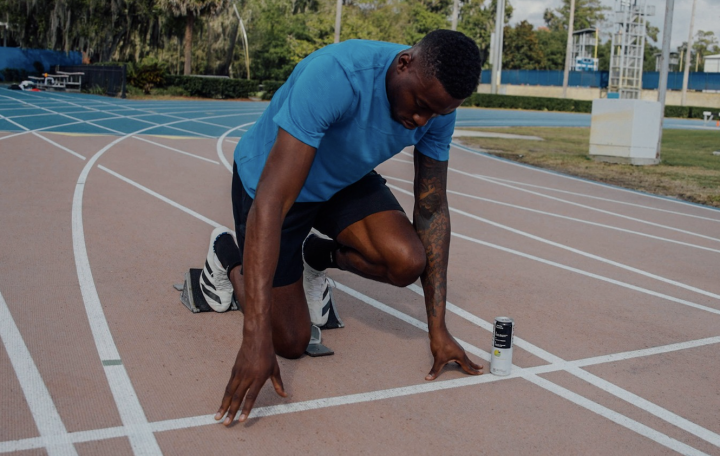
References:
Cheung, K., Hume, P., & Maxwell, L. (2003). Delayed onset muscle soreness: treatment strategies and performance factors. Sports Medicine, 33(2), 145-164.
Schwellnus, M. P., Drew, N., & Collins, M. (2009). Is running associated with a greater risk of acute or overuse muscle injury compared with walking or resistance training in adults? A systematic review. British Journal of Sports Medicine, 43(6), 391-397.
Lee, I. M., Shiroma, E. J., Petrovitch, H., Burchfiel, C. M., Ross, G. W., Abbott, R. D., & Curb, J. D. (2019). Physical activity and mortality: What is the dose-response relation? JAMA internal medicine, 179(2), 143-152.
Is walking good for post-workout recovery? Walking is a great way to aid in muscle recovery after intense exercise because it helps to promote blood flow and oxygenation to the muscles, which can help to reduce muscle soreness and stiffness. When we exercise, our muscles experience small tears, which cause inflammation and soreness. The increased […]
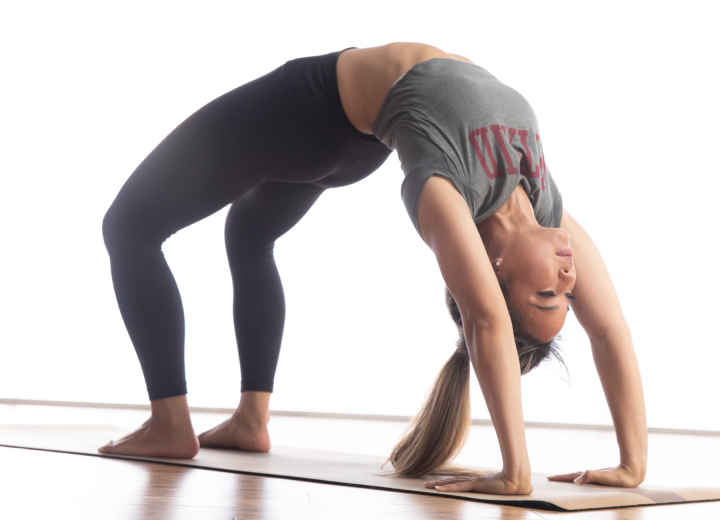
Yoga is a powerful tool for post-workout recovery and recovery from intense exercise. It is a holistic practice that can help to improve flexibility, balance, and strength, as well as promote mental and emotional well-being.
One of the key benefits of yoga for post-workout recovery is its focus on balanced stretching. When we exercise, our muscles become tight and contracted, which can lead to soreness and stiffness. Yoga poses, or asanas, help to gently stretch and release these tight muscles, increasing blood flow and promoting healing.
In addition to stretching, yoga also places a strong emphasis on proper breathing techniques. These techniques, such as pranayama, can help to oxygenate the body and increase circulation, which can aid in the recovery process. Proper breathing techniques can also help to reduce stress and tension, which can be beneficial for both physical and mental recovery.
Another important aspect of yoga for post-workout recovery is hydration. Yoga poses can be demanding on the body, and it is important to stay hydrated in order to promote healing and prevent injury. Drinking plenty of water before and after practice can help to ensure that the body has the fluids it needs to recover.
There are many different types of yoga that can be beneficial for post-workout recovery, such as restorative yoga, yin yoga and viniyoga. Restorative yoga is a gentle practice that uses props such as blankets, bolsters, and blocks to support the body in different poses. This type of yoga can be particularly helpful for those recovering from injuries or intense workouts as it allows the body to relax and release tension.
Yin yoga is a type of yoga that emphasizes holding poses for longer periods of time. This can be beneficial for recovery as it allows for a deep stretch of the connective tissue.
Viniyoga is a therapeutic yoga practice that is adaptable to individual needs, and can be tailored to the specific needs of the individual. This can be especially beneficial for those recovering from an injury or surgery, as it allows for a personalized approach to healing.
Yoga is an effective tool for post-workout recovery and recovery from intense exercise. Its focus on balanced stretching, hydration, and proper breathing techniques can help to improve flexibility, balance, and strength, as well as promote mental and emotional well-being. If you are looking for a safe and effective way to recover from your workouts, consider incorporating yoga into your routine.

Reference:
- Yoga Journal, "The Benefits of Yoga for Athletes" (https://www.yogajournal.com/lifestyle/the-benefits-of-yoga-for-athletes/)
- Yoga Alliance, "Yin Yoga: The Foundations of a Quiet Practice" (https://www.yogaalliance.org/YACEP/yin-yoga-the-foundations-of-a-quiet-practice)
- Yoga International, "What is Viniyoga?" (https://yogainternational.com/article/view/what-is-viniyoga)
Yoga is a powerful tool for post-workout recovery and recovery from intense exercise. It is a holistic practice that can help to improve flexibility, balance, and strength, as well as promote mental and emotional well-being. One of the key benefits of yoga for post-workout recovery is its focus on balanced stretching. When we exercise, our […]
Blue Light might be the culprit for staying up at night.
Say that 10 times fast!
As technology continues to advance, we are exposed to an increasing amount of blue light through our screens and devices. But are there any known dangers of using blue light that affect the quality of sleep for people?
What is Blue Light and How Does it Affect Sleep?
Blue light is a type of light that has a short wavelength and high energy. It is found naturally in sunlight and is also emitted by electronic screens, such as smartphones, laptops, and televisions.
Exposure to blue light during the day can have a number of benefits, such as boosting mood, alertness, and cognitive function. However, exposure to blue light at night can have negative effects on sleep.
The reason for this is that blue light suppresses the production of the hormone melatonin, which is responsible for regulating sleep-wake cycles. Melatonin is produced by the pineal gland in the brain and is released into the bloodstream when the body is exposed to darkness. This helps the body prepare for sleep and promotes feelings of relaxation and calm.
However, when the body is exposed to blue light at night, the production of melatonin is suppressed, making it harder to fall asleep and stay asleep. Studies have shown that exposure to blue light at night can disrupt the body's natural sleep-wake cycle, leading to poor sleep quality and an increased risk of sleep disorders.
Dangers of Using Blue Light at Night
So, what are the dangers of using blue light at night? Here are a few potential negative effects of blue light exposure on sleep:
- Insomnia: Insomnia is a sleep disorder that is characterized by difficulty falling asleep or staying asleep. Exposure to blue light at night can disrupt the body's natural sleep-wake cycle, making it harder to fall asleep and stay asleep, leading to insomnia.
- Poor sleep quality: Exposure to blue light at night can lead to poor sleep quality, which can have a number of negative effects on health. Poor sleep quality can lead to fatigue, irritability, and difficulty concentrating, as well as a number of other health problems.
- Increased risk of sleep disorders: Studies have shown that exposure to blue light at night can increase the risk of developing sleep disorders, such as insomnia and sleep apnea.
- Negative impact on overall health: Poor sleep quality and sleep disorders can have a number of negative effects on overall health. It can lead to a higher risk of developing chronic health conditions, such as diabetes, heart disease, and obesity. It can also negatively impact mental health, leading to increased risk of depression and anxiety.
Why is it Important to Sleep Well if You Want to Recover from Intense Exercise?
In addition to the negative effects of blue light on sleep quality, lack of sleep can also have a negative impact on post-exercise recovery. During sleep, the body repairs and regrows tissues, builds bone and muscle, and strengthens the immune system. It is also during sleep that the body releases growth hormone, which is essential for muscle growth and repair.
Given the numerous benefits of sleep for post-exercise recovery, it is important to prioritize getting enough sleep after a workout. Lack of sleep can lead to fatigue, irritability, and difficulty concentrating, as well as a number of other health problems. It can also negatively impact mental health, leading to an increased risk of depression and anxiety.
To ensure proper post-exercise recovery and optimize performance, it is important to get a good night's sleep. To do this, try to avoid screens for at least an hour before bed, establish a consistent sleep schedule, and create a comfortable sleep environment. By prioritizing sleep and limiting exposure to blue light at night, you can improve sleep quality and optimize your post-exercise recovery.
DreamAid Go: A Clean and Effective Way to Assist in Falling Asleep and Staying Asleep Longer
So, how can you protect yourself from the negative effects of blue light at night and improve sleep quality? PUT AWAY YOUR PHONE and try using DreamAid Go, a clean and effective way to assist in falling asleep and staying asleep longer.
DreamAid Go is a CLEAN sleep helper that contains a blend of effective and clean vitamins and nutrients to support sleep. It is formulated with melatonin, a hormone that may regulate sleep-wake cycles, as well as a blend of herbs, such as valerian root and chamomile, which have a calming effect on the body.
DreamAid Go is also free from artificial sweeteners! Give it a try and let us know at @FITAID on instagram how you slept!
Blue Light might be the culprit for staying up at night. Say that 10 times fast! As technology continues to advance, we are exposed to an increasing amount of blue light through our screens and devices. But are there any known dangers of using blue light that affect the quality of sleep for people? What […]
What's the deal with diffusers?
Why should you consider using diffusers in your post-workout recovery routine?
The use of diffusers and essential oils has become increasingly popular in recent years for their various health benefits, including aiding in recovery from physical activity and stress.
In this post, we will explore the benefits of using essential oils for recovery and recommend some of the best oils to use for this purpose. We will also introduce FITAID Sports Recovery.
It is a delicious and effective way to relax and recover from a crushing WOD, a resolution run, or any sweat-inducing gym session.
But first, let's take a look at what diffusers and essential oils are and how they work.
What are Diffusers and Essential Oils?
Diffusers are devices that disperse essential oils into the air as a fine mist. The oils are then inhaled, allowing the user to reap the therapeutic benefits of the oils. There are various types of diffusers available, including ultrasonic, nebulizing, and heat diffusers.
Essential oils are concentrated plant extracts that are obtained through a process called distillation. They are called "essential" because they contain the essence of the plant's aroma and flavor. Each essential oil has its own unique blend of chemical constituents, which give it its distinct scent and therapeutic properties.
Benefits of Using Essential Oils for Recovery
Essential oils have been used for centuries for their therapeutic properties and are believed to have a number of benefits when it comes to recovery from physical activity and stress. Some of the benefits of using essential oils for recovery may include:
Reducing muscle soreness and fatigue: Certain essential oils, such as peppermint, eucalyptus, and ginger, have anti-inflammatory and pain-relieving properties that may help reduce muscle soreness and fatigue.
Improving sleep: Many essential oils, such as lavender, chamomile, and frankincense, have a calming effect on the body and can help improve sleep quality. This is especially important for recovery, as sleep is when the body repairs and rejuvenates itself.
Boosting the immune system: Some essential oils, such as tea tree and eucalyptus, are believed to have antimicrobial properties that can help boost the immune system and protect against infections.
Reducing stress and anxiety: Essential oils like lavender, bergamot, and ylang-ylang are known for their calming and anxiety-reducing effects, making them useful for relieving stress and promoting relaxation.
Best Oils for Recovery
Here are some of the best essential oils to use for recovery:
Peppermint: This oil has been tied to anti-swelling, inflammation reduction and pain-relieving properties that can help reduce muscle soreness and fatigue. It is also refreshing and invigorating, making it a great choice for post-workout recovery.
Eucalyptus: This oil has analgesic properties that can help reduce muscle soreness and fatigue. It is also believed to have antimicrobial properties, making it useful for boosting the immune system.
Ginger: This oil has anti-inflammatory and pain-relieving properties that may help reduce muscle soreness and fatigue. It is also believed to have antioxidant properties, making it useful for protecting against free radical damage.
Lavender: This oil has a calming and relaxing effect on the body, making it useful for reducing stress and improving sleep quality. It is also believed to have analgesic properties, which can help reduce muscle soreness and fatigue.
Chamomile: This oil has a calming and relaxing effect on the body, making it useful for reducing stress and improving sleep quality. ItFrankincense: This oil has a calming and grounding effect on the body, making it useful for reducing stress and improving sleep quality. It is also believed to have anti-inflammatory properties, which can help reduce muscle soreness and fatigue.
Tea tree: This oil has antimicrobial properties, making it useful for boosting the immune system and protecting against infections. It is also believed to help reduce muscle soreness and fatigue.
Bergamot: This oil has a calming and uplifting effect on the body, making it useful for reducing stress and anxiety. It is also believed to have analgesic properties, which can help reduce muscle soreness and fatigue.
Ylang-ylang: This oil has a calming and relaxing effect on the body, making it useful for reducing stress and anxiety. It is also believed to have analgesic properties, which can help reduce muscle soreness and fatigue.
FITAID Sports Recovery: A Delicious and Effective Way to Relax and Recover
In addition to using essential oils for recovery, there are other ways to promote relaxation and recovery everyday . One such way is by using FITAID Sports Recovery, a delicious and effective way to relax and recover.
FITAID Sports Recovery is a nutrient-rich drink that contains a blend of vitamins, minerals, and amino acids that are designed to support recovery from physical activity and everyday stress. It is also flavored with natural flavors and sweeteners, never any aspartame or sucralose - which give FITAID a refreshing and uplifting taste.
In conclusion, the use of diffusers and essential oils can be a powerful tool for aiding in recovery from physical activity and stress. There are a number of essential oils that are particularly useful for this purpose, including peppermint, eucalyptus, ginger, lavender, chamomile, frankincense, tea tree, bergamot, and ylang-ylang. In addition to using essential oils, FITAID Sports Recovery is a delicious and effective way to relax and recover!
What’s the deal with diffusers? Why should you consider using diffusers in your post-workout recovery routine? The use of diffusers and essential oils has become increasingly popular in recent years for their various health benefits, including aiding in recovery from physical activity and stress. In this post, we will explore the benefits of using essential […]
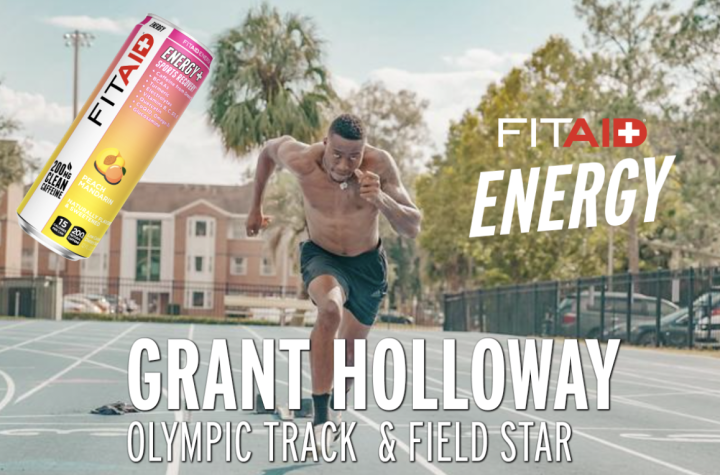 Feeling the burn?
Feeling the burn?
(image: Grant Holloway, Olympic Track & Field star drinks FITAID Energy)
After a tough workout or athletic competition, it's important to replenish your body's energy stores and repair muscle damage. Sports drinks can be a convenient and effective way to do this, providing a combination of hydration, electrolytes, and nutrients that support recovery and overall health. But with so many sports drinks on the market, it can be tough to know which one is the best choice. We'll explore what makes the best recovery sports drink, and explain why FITAID Energy is the top choice due to its clean caffeine from green tea and natural sweeteners.
FITAID Energy is a leading recovery sports drink that is made with all-natural ingredients and is free from artificial sweeteners, such as aspartame and sucralose (gross!). It is formulated with a proprietary blend of nutrients including that support recovery and overall health, including caffeine from green tea, B-vitamins, and amino acids. Many people find that FITAID Energy may help to reduce muscle soreness, improve energy levels, and support overall recovery after intense exercise. FITAID Energy is available in 4 electric flavors with a clean, crisp finish you’ll love: Mango Sorbet, Blackberry Pineapple, Peach Mandarin, and Raspberry Hibiscus, so you can choose the one that best fits your taste preferences.
Why is FITAID Energy is the Best Recovery Sports Drink?
There are several reasons why FITAID Energy is the best choice for a recovery sports drink:
- Clean caffeine from green tea: Caffeine is a natural stimulant that can help to improve alertness, focus, and mental performance. FITAID Energy uses clean caffeine from green tea, which is a natural and sustainable source of caffeine that is rich in antioxidants and other beneficial compounds.
- Natural sweeteners: FITAID Energy is sweetened with natural sweeteners, such as organic agave and stevia, rather than artificial sweeteners like aspartame or sucralose. Artificial sweeteners have been linked to a variety of health problems, including weight gain, increased risk of chronic diseases, and negative effects on gut health. By choosing a sports drink with natural sweeteners, you can avoid these potential negative impacts on your health.
- High-quality ingredients: FITAID Energy is made with clean ingredients and is free from artificial sweeteners. This makes it a clean and healthy choice for those who are looking to support their recovery and overall health in the most natural way possible.
In addition to clean caffeine from Green Tea, FITAID Energy has a power-house of recovery supplements including:
- Turmeric
- Magnesium
- Potassium
- Vitamin C
- Biotin
- Vitamin D3
- Quercetin
- Niacin
- CoQ10
- Calcium
- Vitamin E
- Glucosamine
- Citric Acid
- Vitamin B6
- BCAAs
- L-arginine
- Carbonated Water
- Riboflavin
- Pantothenic Acid
- L-glutamine
- Malic Acid
- Green Tea Extract
- Thiamin
- Natural Flavors
- L-Leucine
- L-Valine
- L-Isoleucine
- Vegan DHA
- Reb A
- Gum Arabic
Feeling the burn? (image: Grant Holloway, Olympic Track & Field star drinks FITAID Energy) After a tough workout or athletic competition, it’s important to replenish your body’s energy stores and repair muscle damage. Sports drinks can be a convenient and effective way to do this, providing a combination of hydration, electrolytes, and nutrients that support […]
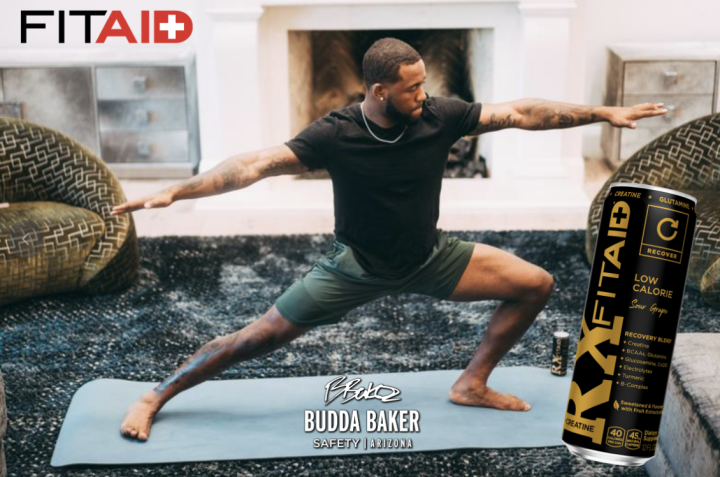 Why is Stretching Important for Post-Workout Recovery?
Why is Stretching Important for Post-Workout Recovery?
As an athlete or fitness enthusiast, you probably already know the importance of a good workout. Whether you're lifting weights, running, or participating in a team sport, physical activity can help improve your physical health and mental well-being. But what happens after the workout is just as important as the workout itself. Proper post-workout recovery is essential for optimal performance and to reduce the risk of injury. One key aspect of post-workout recovery is stretching.
When combined with stretching, FITAID can help support muscle recovery, hydrate the body, boost energy! Read more below on the science behind stretching and the benefits of the clean energy in naturally sweetened FITAID.
Stretching has many benefits for your body, both during and after a workout. During a workout, stretching can improve your range of motion, allowing you to perform exercises with proper form and technique. This can help prevent injury and improve your overall performance. After a workout, stretching can help your muscles recover and return to their normal length.
There are two main types of stretching: static and dynamic. Static stretching involves holding a stretch for a set period of time, usually 20-30 seconds. Dynamic stretching involves moving through a range of motion while stretching. Both types of stretching can be beneficial for post-workout recovery, but it's important to choose the right type of stretching for your specific needs.
Static stretching is best for increasing flexibility and can be done after a workout to help your muscles relax and recover. Dynamic stretching is better for warming up your muscles before a workout and can improve your overall performance. It's a good idea to include both types of stretching in your post-workout routine to get the most benefits.
So, why is stretching important for post-workout recovery? Here are a few key reasons:
Reduces muscle soreness: Stretching can help reduce muscle soreness by increasing blood flow to the muscles. This can help flush out lactic acid, a byproduct of exercise that can cause muscle soreness.
Improves flexibility: Stretching can help improve your flexibility and range of motion, which can reduce the risk of injury during exercise.
Increases blood flow: As mentioned above, stretching can increase blood flow to the muscles, which can help speed up the recovery process.
Reduces stress: Stretching can also have a calming effect on the body and mind, helping to reduce stress and improve overall well-being.
Why Should You Drink FITAID Post-Workout?
In addition to stretching, another important aspect of post-workout recovery is replenishing your body with the nutrients it needs to repair and rebuild muscles. This is where a post-workout drink like FITAID comes in.
FITAID is a recovery drink specifically formulated for athletes and fitness enthusiasts. It contains a blend of nutrients and electrolytes that help support post-workout recovery, including protein, vitamins, and minerals.
Here are a few benefits of drinking FITAID post-workout:
Supports muscle recovery: FITAID contains vitamins, which as essential for repairing and rebuilding muscles after a workout. It also contains other nutrients that support muscle recovery, such as BCAAs, Turmeric, Magnesium, Potassium, Calcium, Vitamins B, C, D3, E, Quercetin, CoQ10, Glucosamine
- Hydrates the body: FITAID contains electrolytes without sodium, which help keep your body hydrated and prevent dehydration. Dehydration can lead to muscle cramps and fatigue, so it's important to replenish your body's fluids after a workout.
- Boosts energy: FITAID Energy contains clean caffeine from Green Tea and electrolytes that can help replenish your body's energy stores after a workout. This can help you feel more energized and ready to tackle your next workout.
- Reduces inflammation from everyday stress: FITAID contains antioxidants and Turmeric that may help reduce inflammation in the body from everyday stress, which can help speed up the recovery process.
- Convenient and portable: FITAID comes in a convenient, portable ready-to-drink 12 oz container that you can easily take with you on the go. This makes it easy to refuel your body after a workout, no matter where you are.
Overall, FITAID is a great option for post-workout recovery. When combined with stretching, FITAID can help support muscle recovery, hydrate the body, boost energy! Whether you're an athlete or just looking to improve your overall fitness, incorporating FITAID and stretching into your post-workout routine can help you get the most out of your workouts and recover more effectively.
I hope this blog post provides useful information about the importance of stretching and the benefits of drinking FITAID post-workout. If you have any questions or need further information, don't hesitate to ask us on social or our CST team!
Why is Stretching Important for Post-Workout Recovery? As an athlete or fitness enthusiast, you probably already know the importance of a good workout. Whether you’re lifting weights, running, or participating in a team sport, physical activity can help improve your physical health and mental well-being. But what happens after the workout is just as important […]
